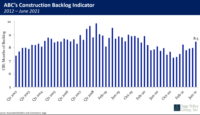As the U.S. and other countries try to contain the spread of COVID-19, one veteran construction industry analyst weighs in on how the changing work practices and dislocations could reshape construction
[For ENR’s latest coverage of the impacts of the COVID-19 pandemic, click here]
"This virus has become a world-wide pandemic. It is highly transmissible, has a much higher mortality rate than the flu and, importantly, there is—at this time—neither vaccine nor medicine to cure it," says Julian Anderson,president of construction cost management and economic consultant Rider Levett Bucknall.
"The net effect of this leads to ... economic dislocation. Air travel has ground to a near halt; businesses in the retail, food service, hotel, sports, and travel industries have closed; and, while construction sites have mostly continued running, many design firms have implemented working from home policies," he says. "The toxic combination of pandemic and economic dislocation has caused a global panic in the financial markets."
"So, where does this leave the construction industry?" asks Anderson.
"In the short term, unless jobsites are forced to close, things will look almost normal. However, under the surface, the rot has already started," he says.
Anderson contends that "designers trying to complete major projects while implementing a work-from-home policy will struggle to deliver their projects and some owners are already cancelling or delaying projects. As unemployment increases and consumer confidence slumps, the flow-on effect to the construction industry will inevitably be negative."
He predicts that "as long as the economy does not enter a deep recession—or depression—the industry will most likely face a few noticeably leaner years where, once again, belt tightening will be the new normal."




